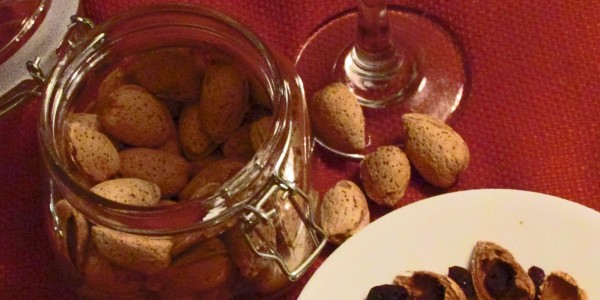As Good as Glӧgg

GLN Leadership Fellow Karen Griffith shares her love of exploring global recipes in this latest blog post.
As good as Glӧgg
Glӧgg recipe (adapted recipe)
1 ½ cup of Cabernet Sauvignon
1 ½ cup of Port
½ cup of Water
1 Lemon Peel and juiced
1 Orange Peel and juiced
1 inch of ginger *peeled and sliced
8 cloves
8 whole cardamom pods *slightly crushed
2 Cinnamon Sticks
½ cup of plain sugar
Optional:
1 cup of almonds
1 cup of raisins
1 cup of Brandy
Directions
Pour in 1 ½ cup of Cabernet Sauvignon. It was suggested to me to get a cheaper wine of cabernet sauvignon as this recipe is adding flavors. The wine you use does not need to have its own flavors that may overpower the drink. Pour in 1 ½ cup of Port wine which will add its own sweetness or any German sweet wine. Peel your orange and lemon and slice the ginger into thin pieces. Add your spices and fruits into a cheesecloth and tie into a bag to add into a saucepot capable of holding at least a bottle of wine. Bring wine to a gentle simmer and let brew with the spices for 30 minutes and remove the spice bag. Add the plain sugar and continue to simmer for 15 minutes. Turn off and let the glӧgg chill then bottle (can be refrigerated for 1 to 2 weeks) . Reheat and serve with raisins and almonds in your glass of choice or on the side.
At this chilly time of year, it is a perfect time to enjoy warm and cozy winter time beverages ranging from hot cocoa, to your favorite type of coffee or eggnog. In Scandinavia, particularly in Sweden, mulled wine is a traditional favorite. This recipe is easy to pour, place and partake in.
Glӧgg is pronounced gloog, meaning mulled or spiced hence mulled wine, but Glӧgg is thought to relate to the word glӧd which mean to glow or the glow that comes off when something is heated. The traditional beverage dates back to the around the time of King Gustav I of Vasa who ruled from 1523 to 1560 and is thought to be a favorite of the notable king. Gustav Vasa was a key figure in the Swedish war of liberation which took place from 1521 to 1523. With support from Swedish rebels against King Christian II of Denmark and Norway, fled captivity in Denmark, he traveled across Dalarna county to escape. The Vasaloppet is a cross country ski race that takes place annually that commemorates this journey. He took refuge in Lϋbeck, Germany to gain further support for his cause.
In researching for this recipe, many of the literature and recipes I encountered for Glӧgg included German wine as an accompaniment with the red wine instead of port. It is possible that this influence on the beverage comes from this period. Throughout the rule of King Gustav I, German influence is seen including introduction of Lutheranism to Sweden.
While making this beverage, my kitchen was filled with the aromatic scents coming from the pot as it steamed away. The smell alone was better than any seasonal candle I could have bought at the store. Once it was poured out into the glasses, frosty steam rose aromatically. You have the option of adding almonds and raisins while the mixture is steeping. But in my case since almonds and raisins aren’t too high on my preferred list of nuts and fruits, I saved them as a garish for the end. I watched as they pooled to the bottom of the glass and became coated in the sweet and spiced drink. Personally, I enjoy a hot beverage all 365 days of the year. I am glad I had the opportunity to try a new recipe to add to my winter time classics. GLN offers you the opportunity to grow and discover new cultures through language in support of GLN’s mission. I hope you will give Glӧgg a try as a fun surprise for your friends and family this wintry season.
You will also be able to join us in the spring to learn Swedish and many other global languages.
